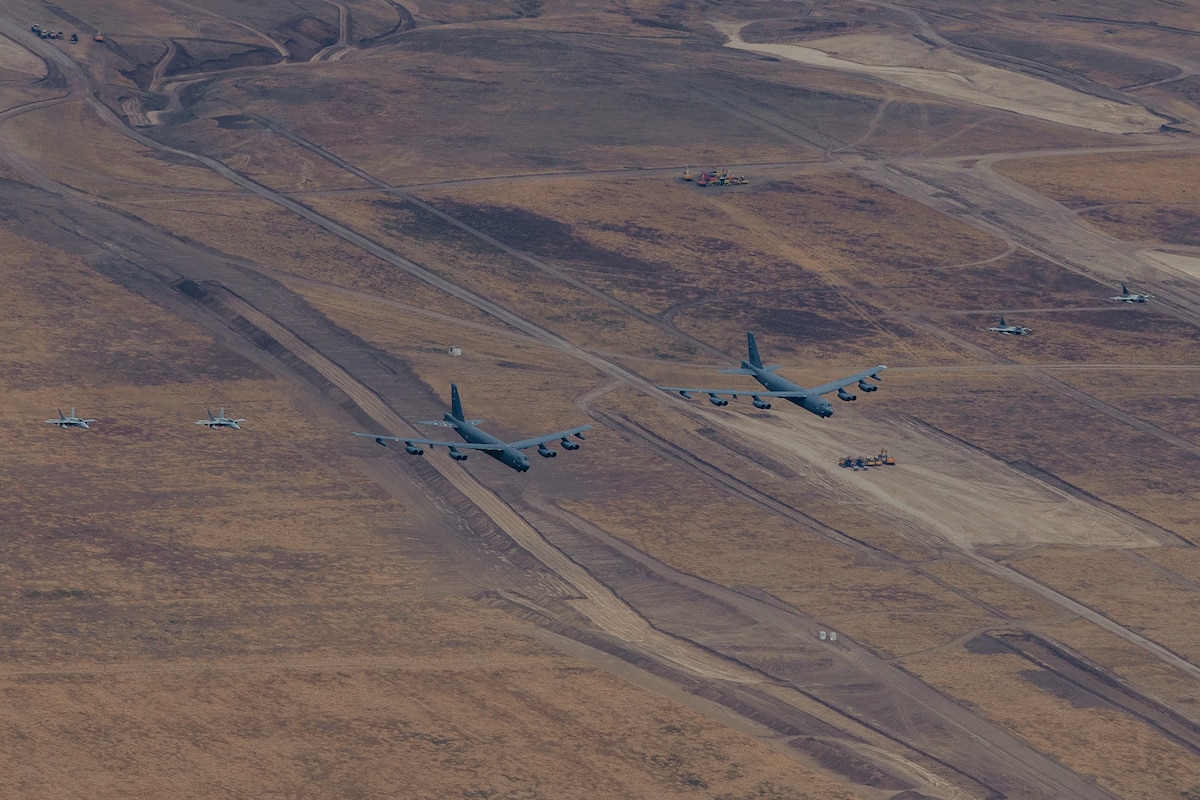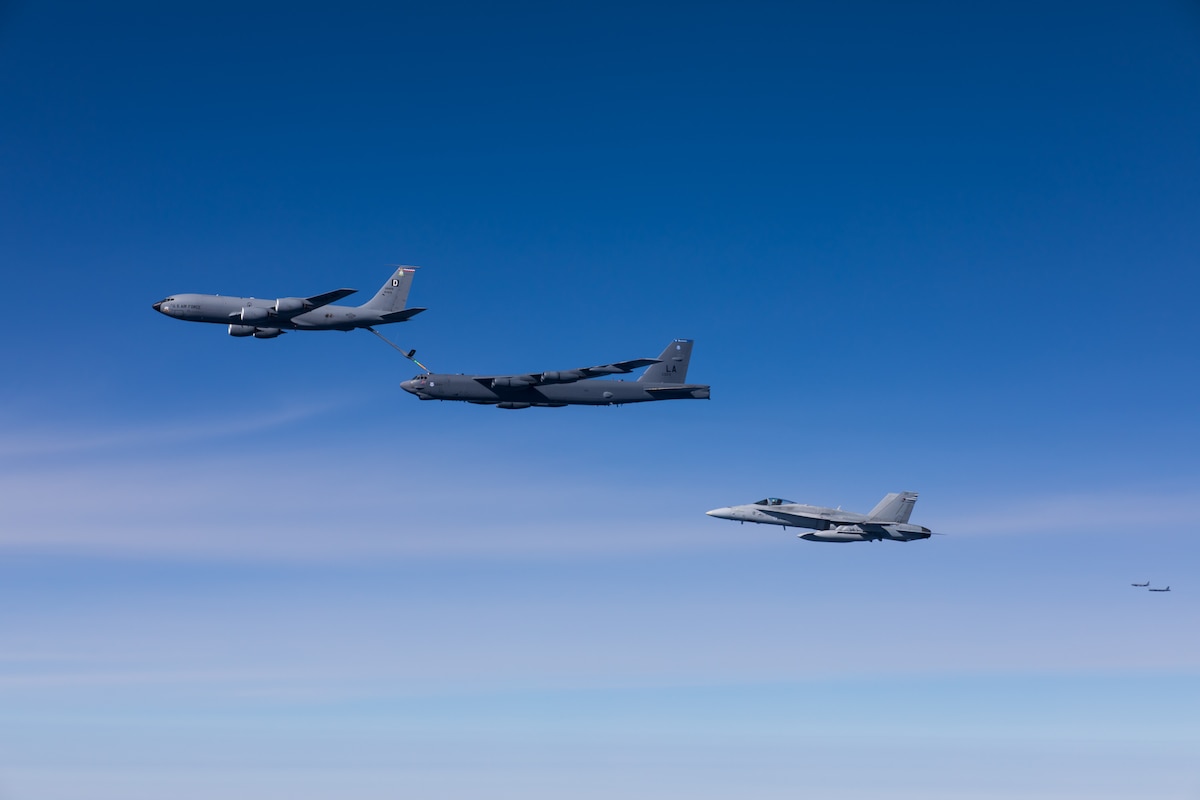Two U.S. Air Force B-52H Stratofortress aircraft assigned to the 2nd Bomb Wing, Barksdale Air Force Base, Louisiana, arrived at Mihail Kogalniceanu Air Base, Romania, for Bomber Task Force 24-4, July 21.
While flying in international airspace and in accordance with international law, the U.S. B-52 aircraft were intercepted by two Russian aircraft over the Barents Sea at approximately 8 a.m. Central European Time. The U.S. aircraft did not change course due to the intercept and continued along their scheduled flight plan without incident, allowing the B-52s to perform their pre-planned mission which included integration alongside NATO fighter aircraft before landing at Mihail Kogalniceanu Air Base.
While deployed, the B-52s will operate as the 20th Expeditionary Bomb Squadron and will integrate with NATO allies and other international partners to synchronize capabilities and assure security commitments across the U.S. European Command area of responsibility.
This marks the first time U.S. strategic bomber aircraft have operated out of Romania.
"In today's global environment, it is vital that we be postured to deliver a range of sustainable capability from great distances. This iteration of Bomber Task Force offers an excellent opportunity to refine our agile combat employment tactics, techniques, and procedures," said Gen. James Hecker, USAFE-AFAFRICA commander. "Through collaborative efforts with our allies, the U.S. enables our forces to combat current and future threats."
The U.S. routinely demonstrates its commitment to NATO allies and partners through BTF missions. Through these missions, USAFE-AFAFRICA enables dynamic force employment in the European theater, providing strategic predictability and assurance for allies and partners while contributing to deterrence by introducing greater operational unpredictability for potential adversaries.
"The U.S. is dedicated to work alongside our NATO allies and partners along the Eastern Flank to ensure we have the combined skills and coordination capabilities necessary to maintain regional safety, security, and stability," Hecker said.
Regular and routine deployments of U.S. strategic bombers demonstrate how the U.S. and NATO are ready, postured, and well prepared to integrate with host-nation allies and partners to deter threats and defend the alliance.









